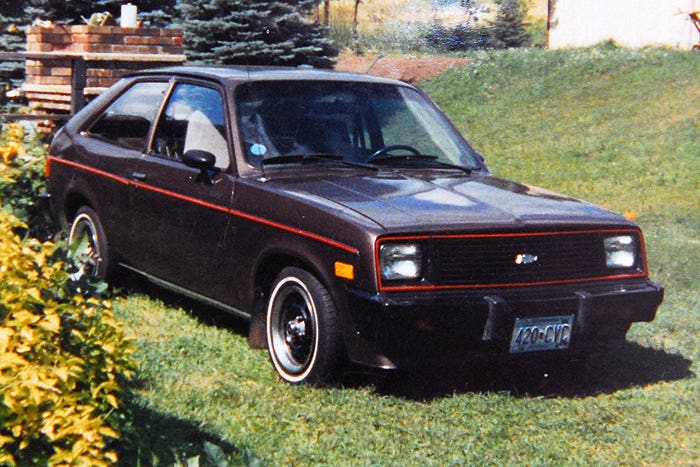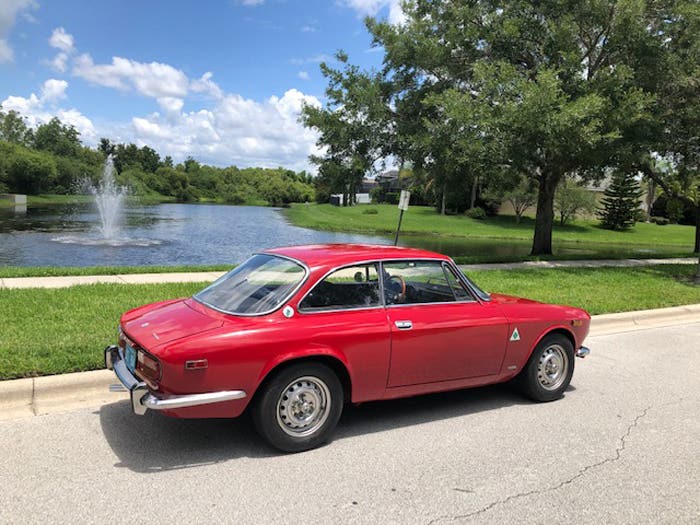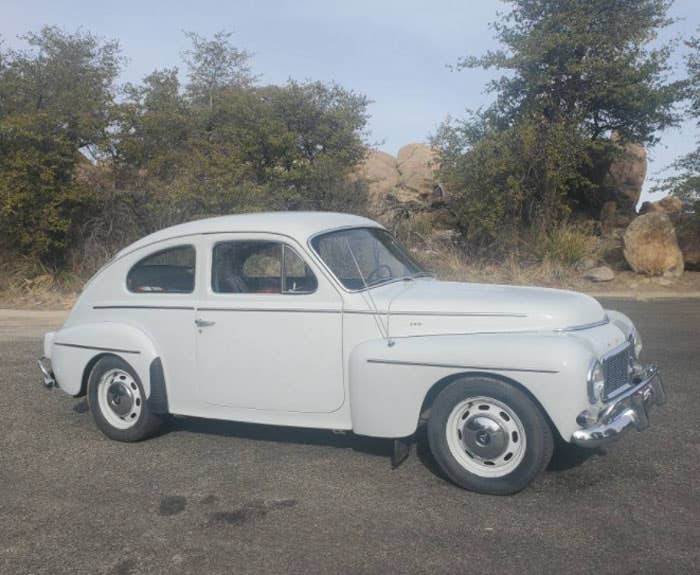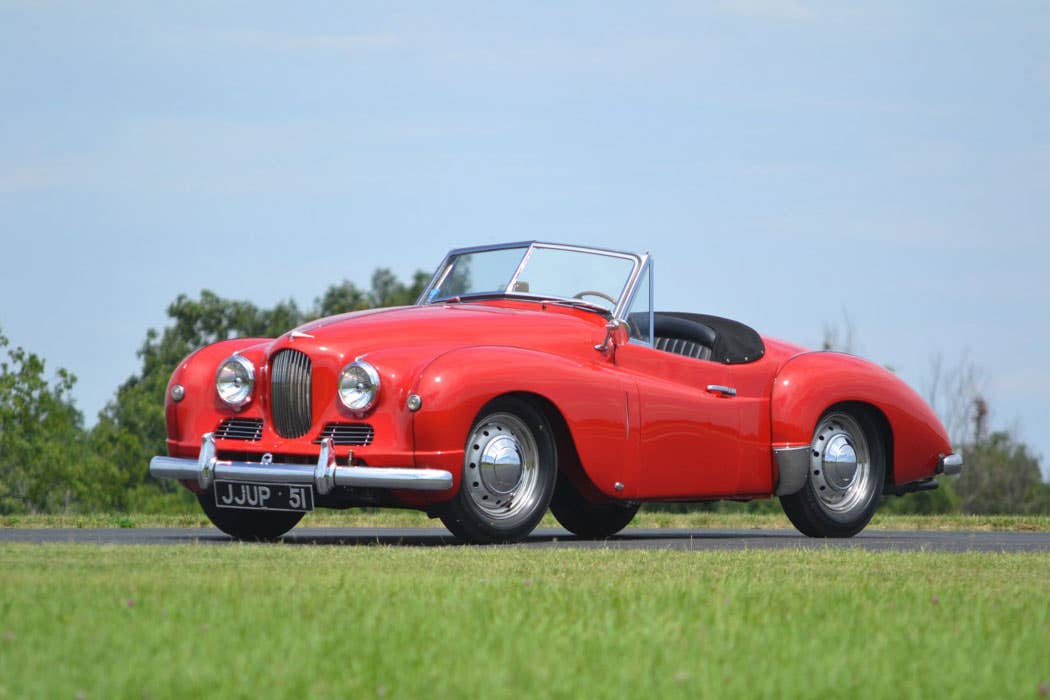History comes full circle for Panamericana Cadillac
In 1924, when General Motors opened its Milford Proving Grounds, the company also began pulling a new car from each marque off the line to store them for posterity. This event occurred once every 10 years. Today, there are more than 700 barely driven General Motors vehicles sitting in a warehouse whose model years end in the number four.
(Editor’s note: Blu Plemons, co-driver in the 1954 Carrera Panamericana, was interviewed in 2005 regarding the race. Al Oppenheiser was interviewed for this story in August 2006.)
Sometimes, events converge to form magic. The coincidences in this story involve a gray and black Cadillac, the General Motors Performance Division, a race and a race car co-pilot.
The coincidental Cadillac
In 1924, when General Motors opened its Milford Proving Grounds, the company also began pulling a new car from each marque off the line to store them for posterity. This event occurred once every 10 years. Today, there are more than 700 barely driven General Motors vehicles sitting in a warehouse whose model years end in the number four.
This 1954 Cadillac Series 62 coupe was independently campaigned and driven by Colorado racers Keith Andrews and Blu?Plemons in the 1954 Carrera Panamericana race. Following the 1,908-mile race, the duo drove the car to Cadillac’s Clark St. facility, where was photographed. The General Motors Performance Division has re-created the car based on an identical car found in GM’s warehouse of more than 700 cars.
In 1954, the Cadillac to be pulled from the line was a Series 62 coupe sporting the only engine combination available — a 331-cid V-8 with a four-barrel carburetor and a Hydra-Matic automatic transmission.
Separated at birth
Around the time this low-mileage Cadillac was built, an identical 1954 Cadillac in the same color and with the same features was thundering across the Mexican earth in the sanity-testing 1954 Carrera Panamericana race, aka the Mexican Road Race.
The Cadillac’s main competition came from the “Road Race” Lincolns, which were factory-backed with a healthy staff of professionals, including such notable drivers as Walt Faulkner and Chuck Stevenson. By comparison to an independent team, the Lincoln team had it rather cushy, with 28 mechanics, a doctor, a cook, and four cars with drivers, in addition to several public relations people.
Pilot Keith Andrews (in driver’s seat) and co-pilot Blu Plemons (in passenger seat) are pictured in the Cadillac at the end of the race. The Cadillac’s rear seat was removed in favor of an additional fuel tank, making it difficult for Andrew’s wife to fit comfortably for this photo. (Sandra Soderberg collection).
Colorado race car drivers Blu Plemons and Keith Andrews had attempted to gain similar corporate backing from the Cadillac Motor Division president, but they were turned down. Despite this obstacle, the duo found a Colorado Springs, Colo., dealer willing to lend them a nearly new Cadillac for the Panamericana.
“Nobody had any money then,” co-pilot Plemons said. “We borrowed the car we raced off a car lot in Colorado Springs, and [the car lot owners] were great people, but [they] didn’t have any money then, either.”
Despite the dealer’s lack of funds, Plemons and Andrews were able to secure a broken-in example from GM’s luxury marque. And according to Plemons, the team would race nothing but a Cadillac.
“Wilson McClure [the team mechanic] believed in them, and he was one hell of a GM mechanic,” Plemons said. Before the race, McClure freshened up the slightly used Cadillac’s engine to ensure it was ready for the 1,908-mile race.
The Panamericana traveled along archaic roads and ox-cart paths. Coupled with high speeds, most competitors put a few battle scars on their cars. But this Cadillac came with a few scars of its own before the race even started.
“Originally, this car had got wrecked coming in from Detroit,” Plemons said. “It was a corporate car, and whoever had been driving it tapped a bridge and hit the quarter panel.”
Together with three friends serving as their crew, Plemons and Andrews nearly won the Panamericana. They took the final two stages of the race by averaging more than 115 mph in the final 410 miles, but they lost out to the Lincolns, placing third in their class and 11th overall.
“We crossed the line first in the race in the big-car class, but it went by overall time,” Plemons said, noting that the other Cadillac in the race was hot on their tail.
“I don’t know how we got that [Ed] Stringer in that other Cadillac,” he said. “He was real close to us.”
Following the race, Plemons and Andrews drove the Cadillac to the GM Divisions’ headquarters where they were photographed next to the car by excited GM staffers. Once Plemons and Andrews said they hadn’t won, their reception turned cold. The pair then packed up and headed back to Colorado, and the Cadillac was put back to stock condition and sold as a used car. After that, it quietly disappeared.
History comes alive
Aware of the successful history of a 1954 Cadillac Series 62 coupe in the Panamericana, and upon learning there was an identical Cadillac in the GM vault of vehicles, the GM Performance Division decided to re-create the important 1954 Carrera Panamericana race car.
“It was coincidence and lucky for us,” said Al Oppenheiser, GM director of concept and vehicle integration. “[The Cadillac] was just in storage, and it had been taken over by the GM?Heritage Center. Greg Wallace [head of the Heritage Center] put it in his stable and hung onto it. When it came up that we wanted to do something to celebrate this Cadillac race and vehicle, he gave us the car.”
Beginning in 1924, GM pulled examples from each of its marques off the line and squirreled the cars away in a warehouse. Today, there are more than 700 cars in storage. This 1954 Cadillac was one of those cars, and since its specifications were identical to those of the car that raced in the 1954 Carrera Panamericana (before it was modified for the race), the General Motors Performance Division recently used it to create this replica of the original race car.
Any project of this magnitude involves a lot of research and diligence. Andrews was killed while practicing for the 1957 Indy 500, but Antoinette Jablonski, who served as the project’s program manager, tracked down Plemons to learn as much as she could about the car and race.
“She just kept pounding and found out through the original brake shop that Blu was alive,” Oppenheiser said.
The work paid off, because not only was Plemons able to provide first-hand accounts, he had several color photographs showing angles of the car that GM did not possess in its archive of black-and-white images.
“Had it not been for Blu’s photos, we couldn’t have made the car so authentic,” Oppenheiser said. “One was a picture from a crop duster that showed the roof.” Without that photo, the performance division had no idea how the No. 127 on the roof should be painted.
Putting pen to paper
With the research in order, 12 GM employees dove into the six-month-long project. Although the ’54 Cadillac was nearly new, the restoration still had its tough spots.
“The single most difficult part was finding an original water pump [that didn’t leak],” Oppenheiser said.
Since the team was not familiar with Cadillac water pumps of this vintage, they didn’t realize that the pump would leak a little until the rubber seals seated.
Including the mechanical work, nearly every other aspect of the car’s revival was done in-house, the only exception being the rechroming of the car’s parts.
“We went to a local source for rechroming some of the parts, but basically, the vehicle was restored within the Performance Division,” Oppenheiser said. “Our technicians did the roll cage, they stripped the car as we found it, did any body work and had it painted by our show vehicle group. The engine was done with our partners at GM Powertrain, and we also had our design center trim group redo the trim on the seats for the interior.”
The restorers diligently adhered to making the Cadillac authentic, but since the car was built to be driven, modifications were employed for safety. The car also received a dual-quad carburetor setup from a later Cadillac. However, before the car appears at the Carrera Panamericana reunion in November 2006, the original four-barrel manifold and carburetor will be permanently reinstalled.
On the road again
Once the replicated Panamericana race car was completed, it immediately hit the road, just like the original.
“Literally, the second mile it took was on the [Hot Rod] Power Tour,” Oppenheiser said. “Then it drove about 1,500 miles on its maiden voyage.”
The Cadillac may appear at other events before the Carrera Panamericana reunion in Oaxaca, Mexico, but its most memorable appearance will be when Plemons appears with the car in Oaxaca.
By coincidence, Plemons will turn 79 years old during the Panamericana reunion with the Cadillac, but it won’t be the first time he’s seen the replica.
“We brought him out to Milford and let him drive the car,” Oppenheiser said. “He was bit teary-eyed — it brought back a lot of memories.”
Plemons surely saw the reunion as a gift from GM, but he had a gift of his own. Upon the car’s completion, Plemons presented the restoration team with the original Mexican license plates that adorned the car during the race. They now decorate the car’s bumpers.
Re-creating a legend
Projects performed by the GM Performance Division once purely involved customizing new cars and trucks for the show circuit. But a few years ago, the group began working on vintage cars, too.
“We have chosen in my group to do at least one heritage vehicle per year,” Oppenheiser said. “If you remember, we did an orange GTO and a Colorado [truck], and they were high dollar-styled vehicles.?We decided rather than [only] spend big money on vehicles that may not be able to get to customers, we’d celebrate GM’s heritage.”
Re-creating the 1954 Cadillac that competed in the Carrera Panamericana isn’t the first such historical project GM has undertaken. Last year, the group built a 1955 Chevrolet 150 to replicate the car driven by Herb Thomas in a 1955 NASCAR race. The team is also known for its performance buildup of a 1966 Toronado and 1955 Buick for comedian and The Tonight Show host Jay Leno. But the Cadillac project was a bit different than the others.
“This year, the synergy between us finding out we had a ’54 Cadillac in our own stable that matched the car in this story of three guys who didn’t have two nickels to throw together [but] went down and raced any way [inspired us],” Oppenheiser said. “It was a story of people with a passion for Cadillac.”
And it was re-created by a group with a passion for people.








